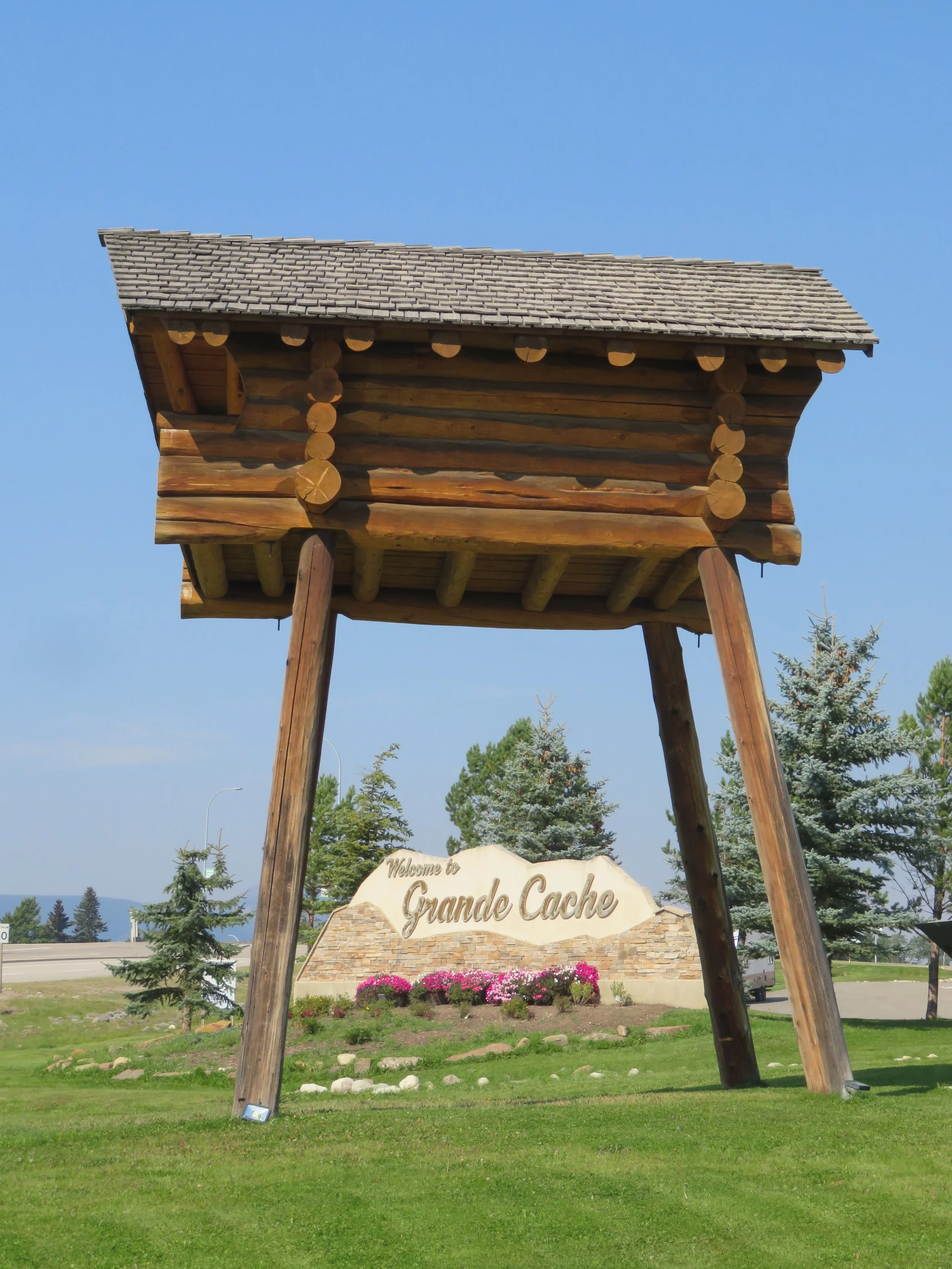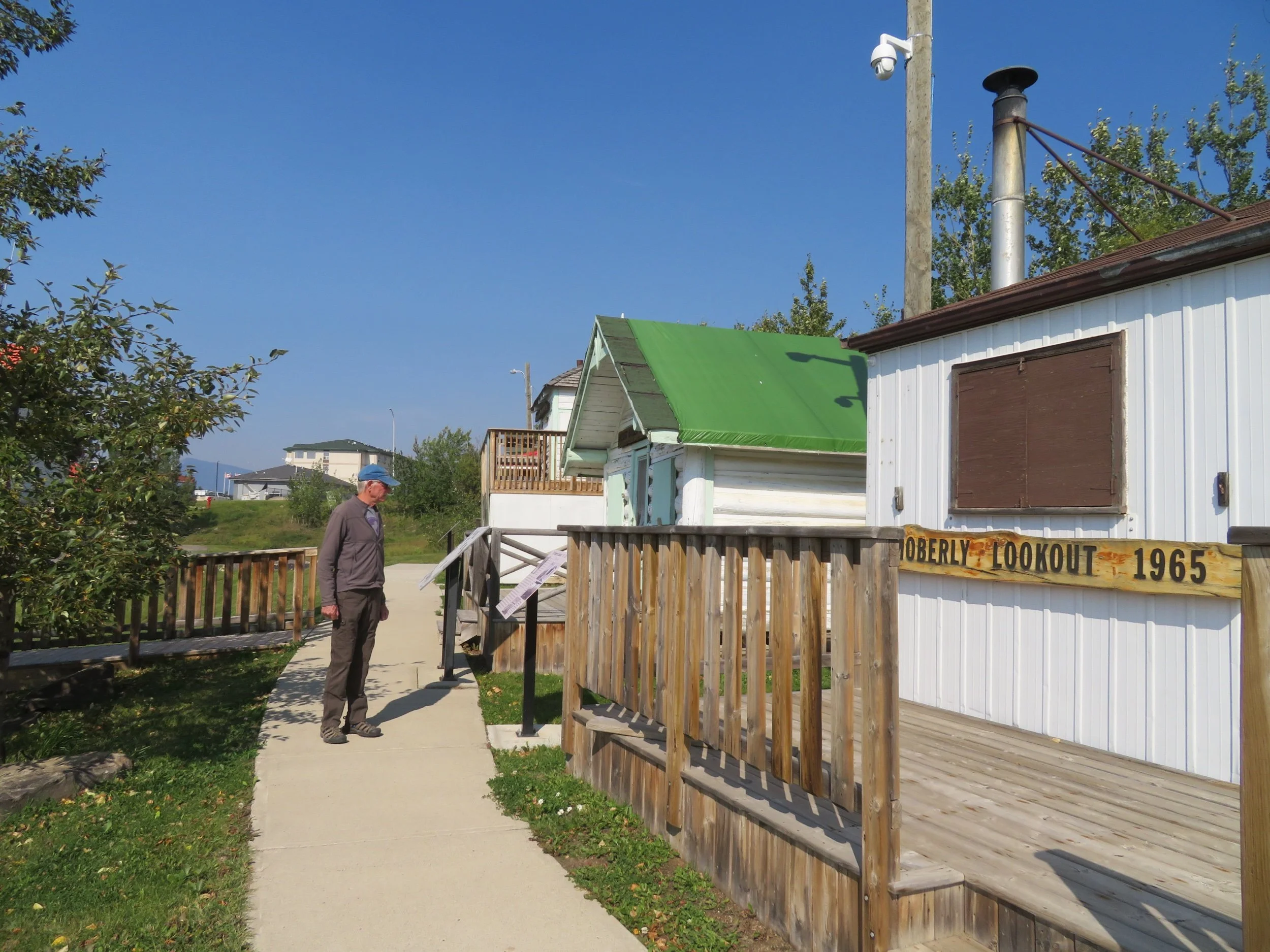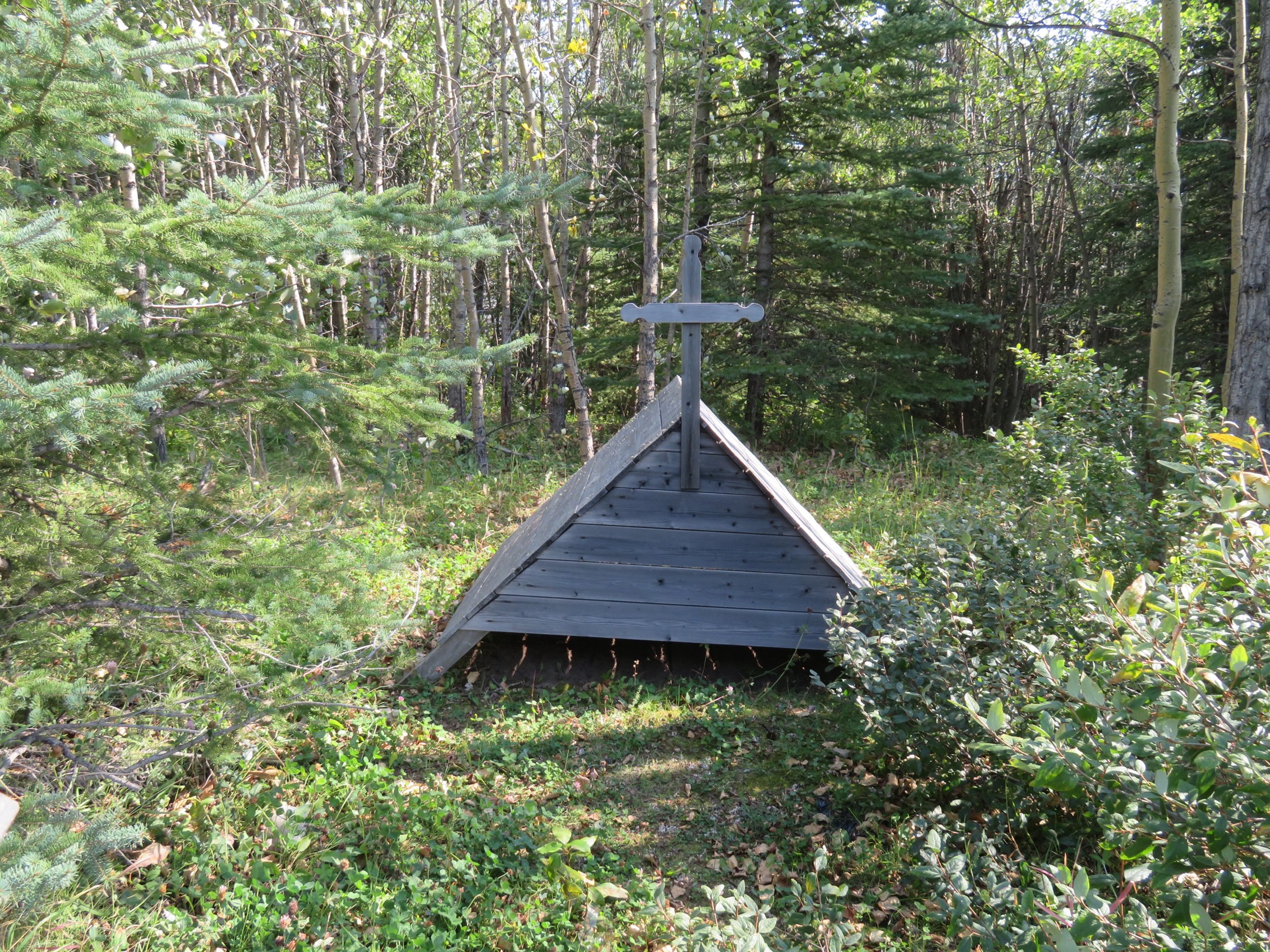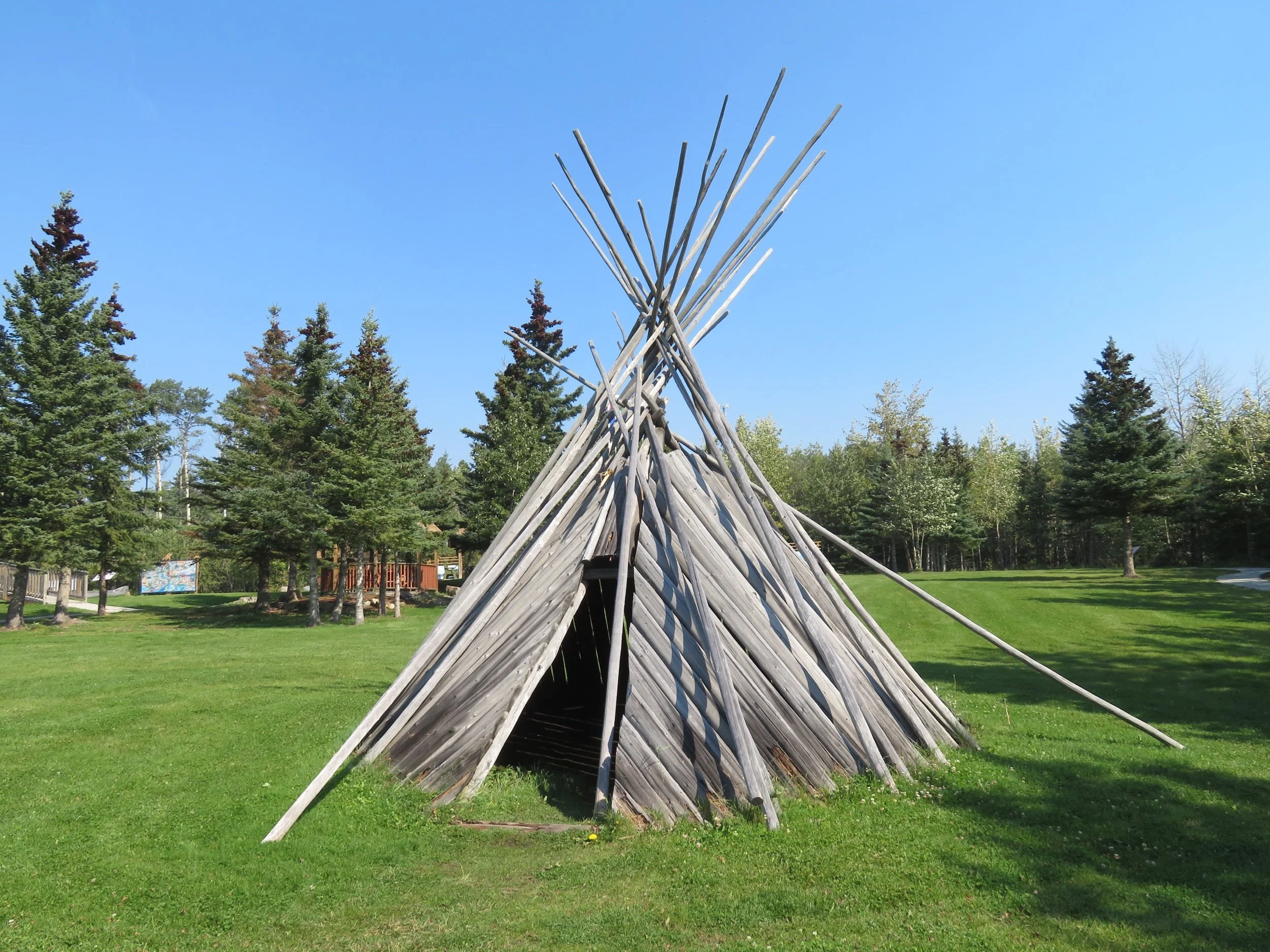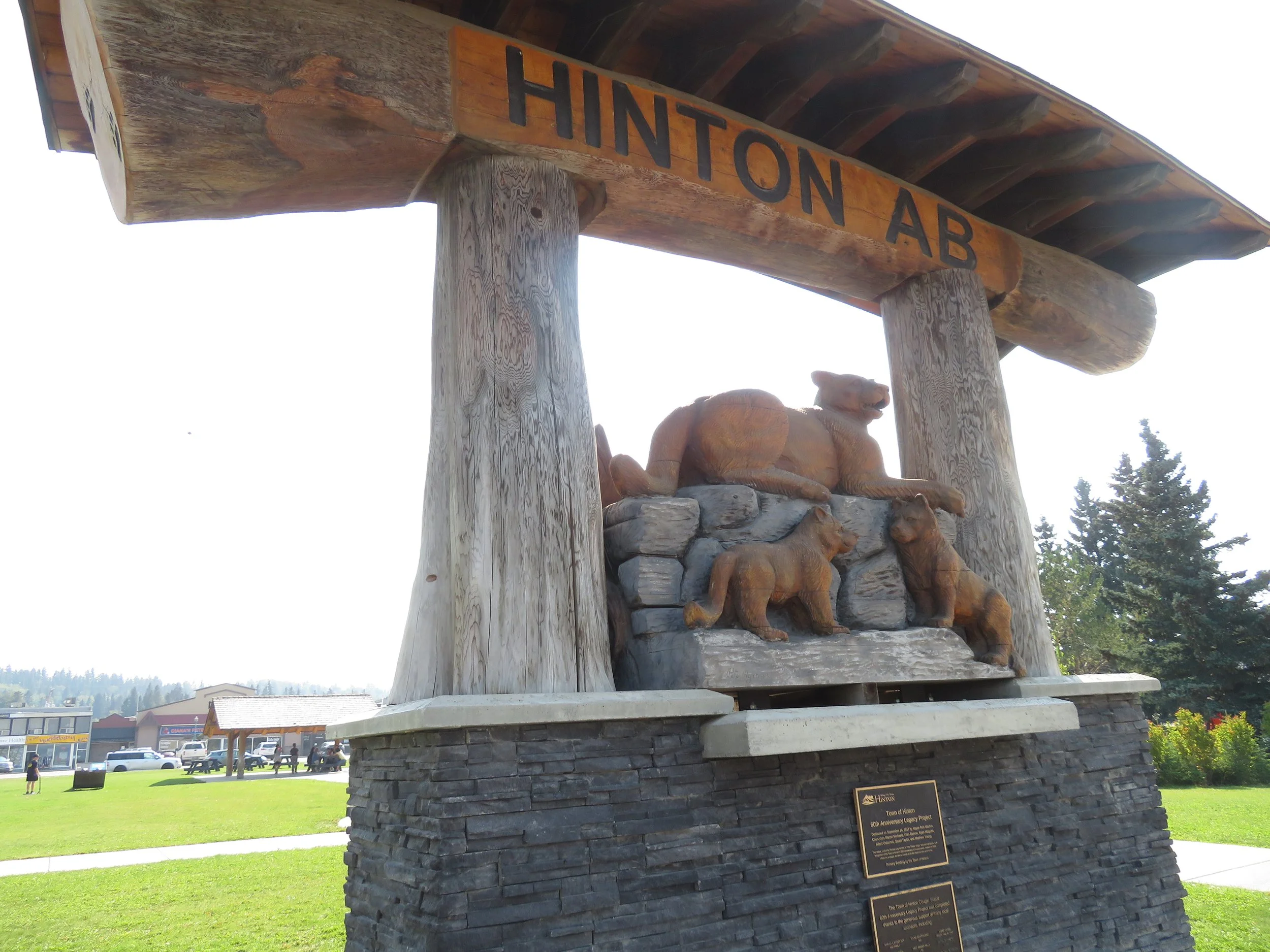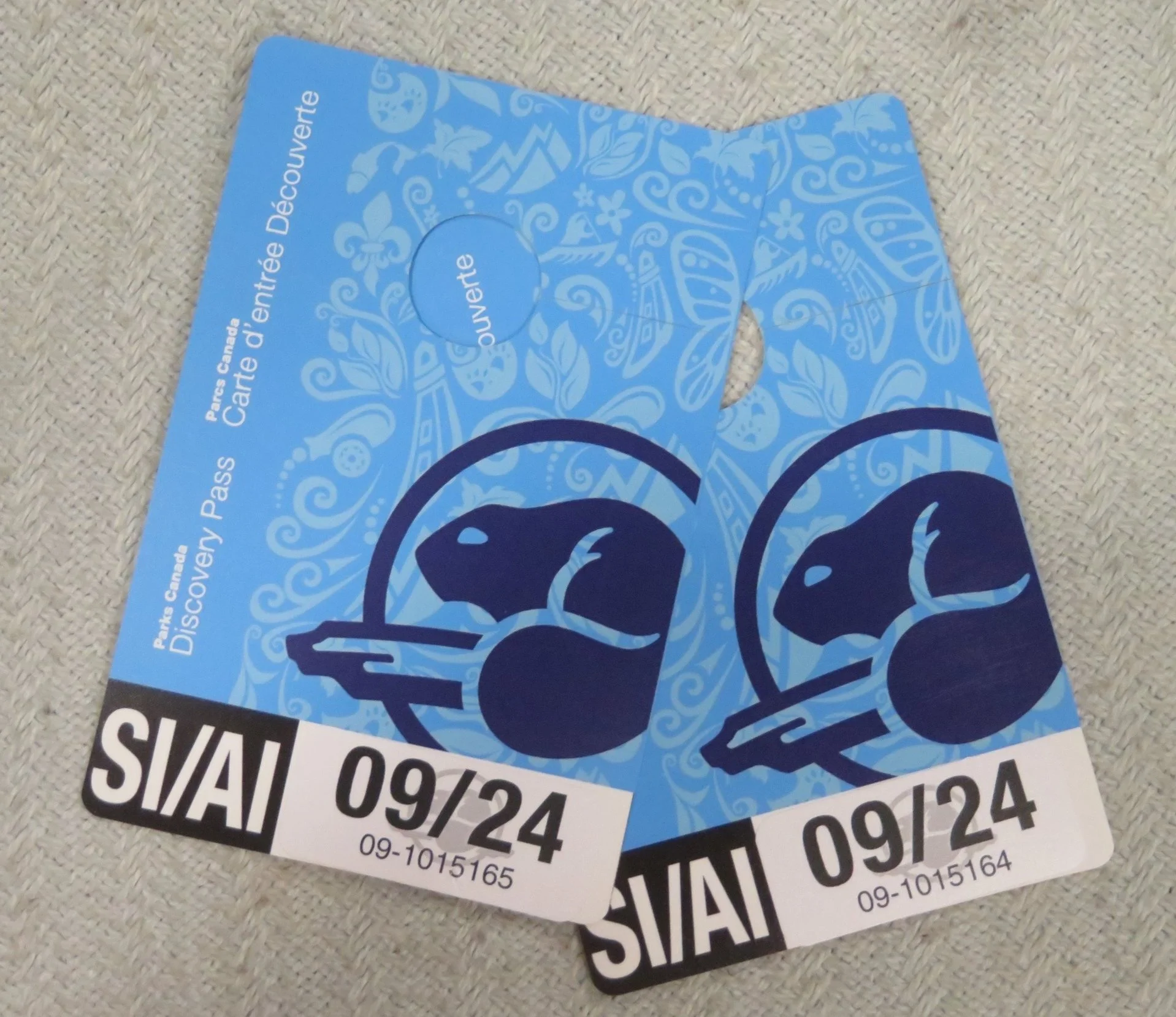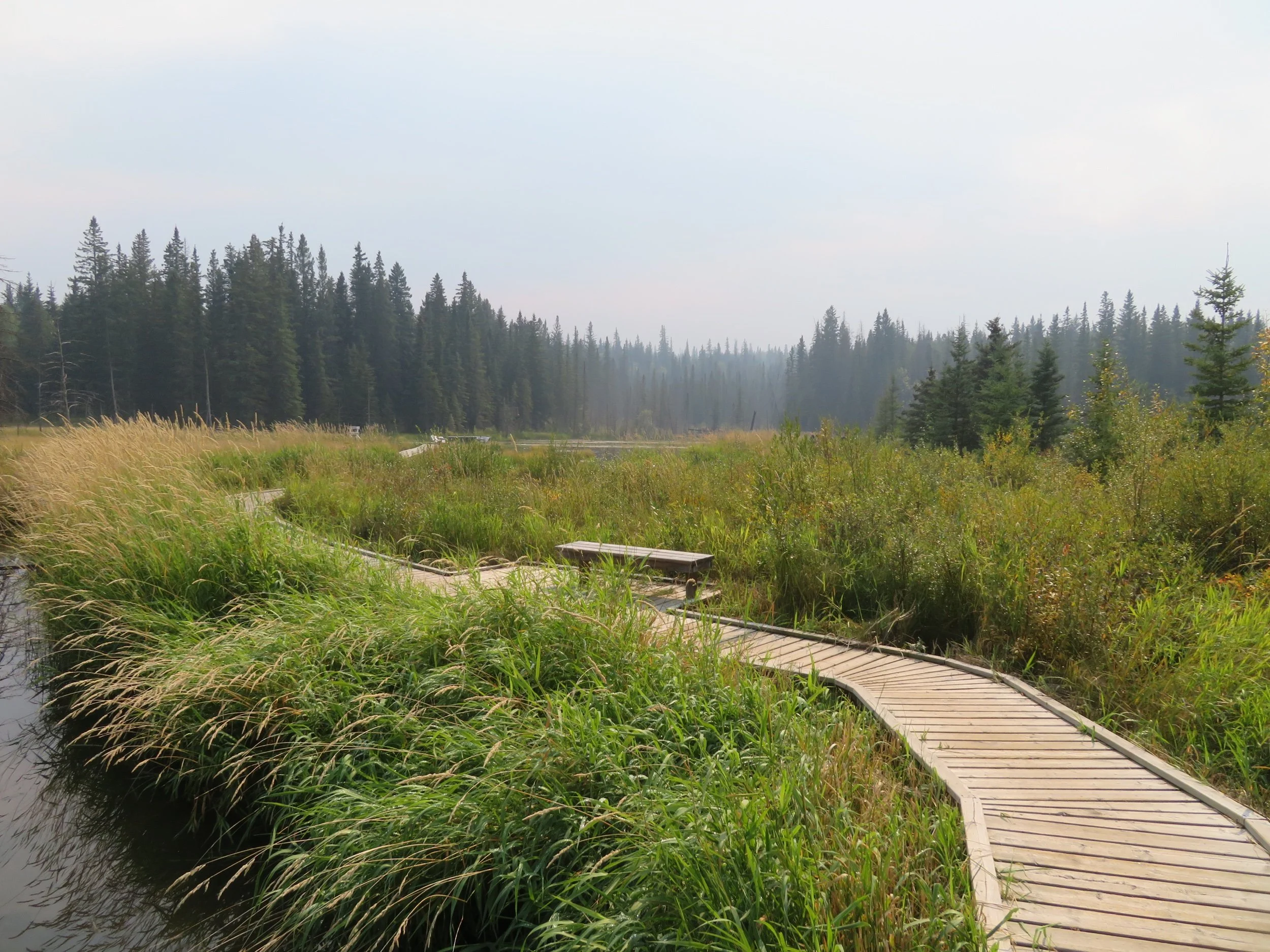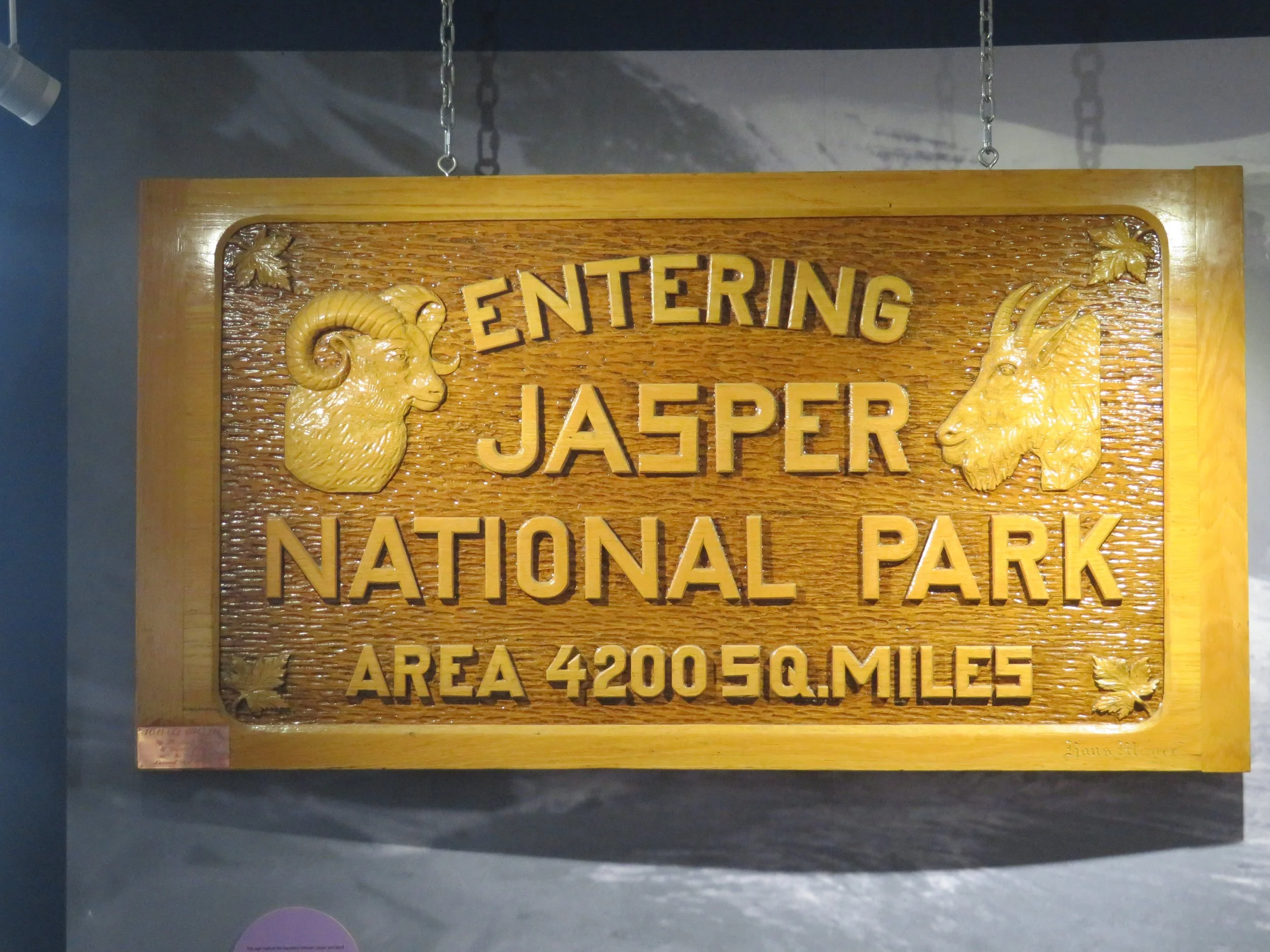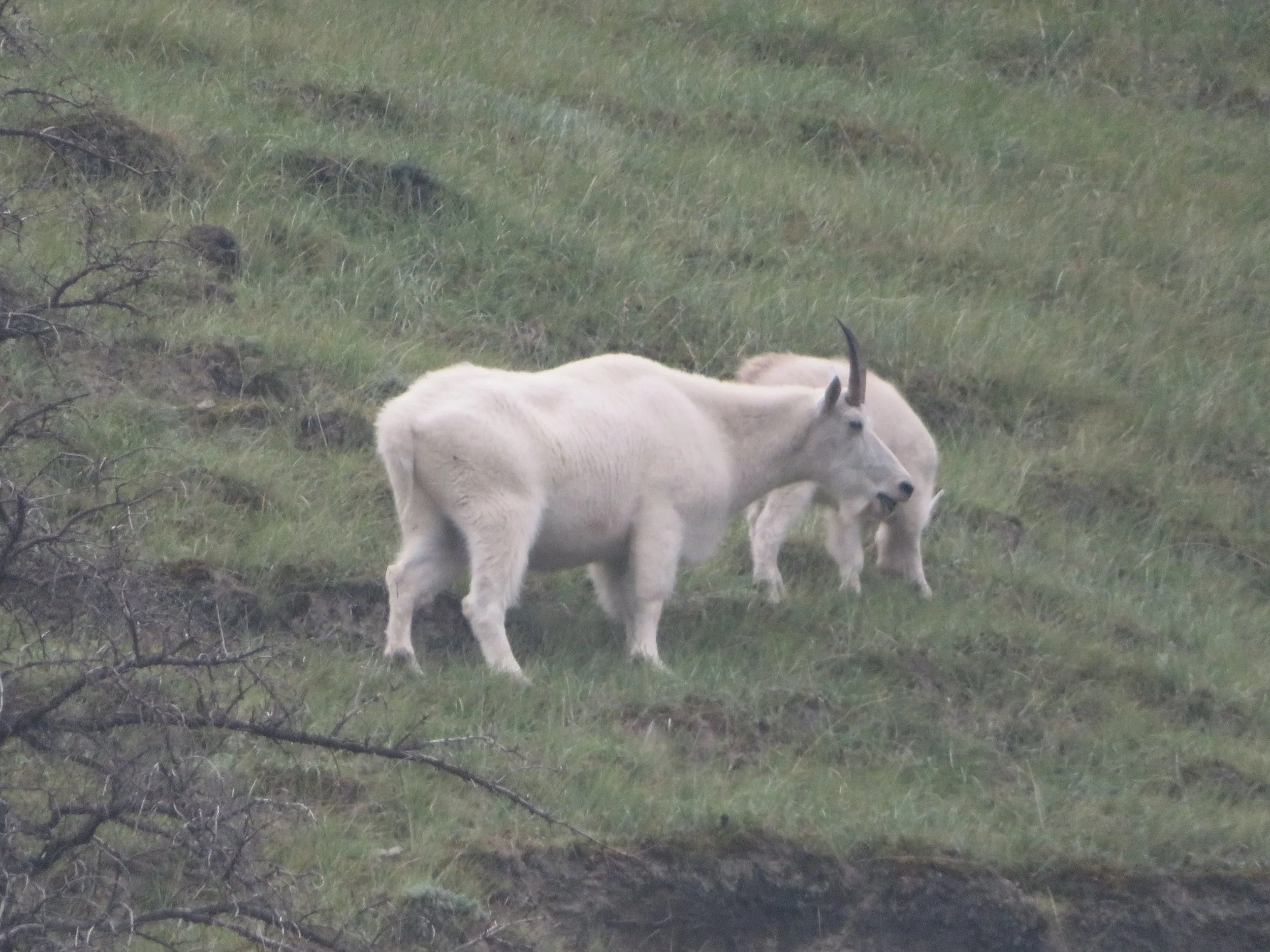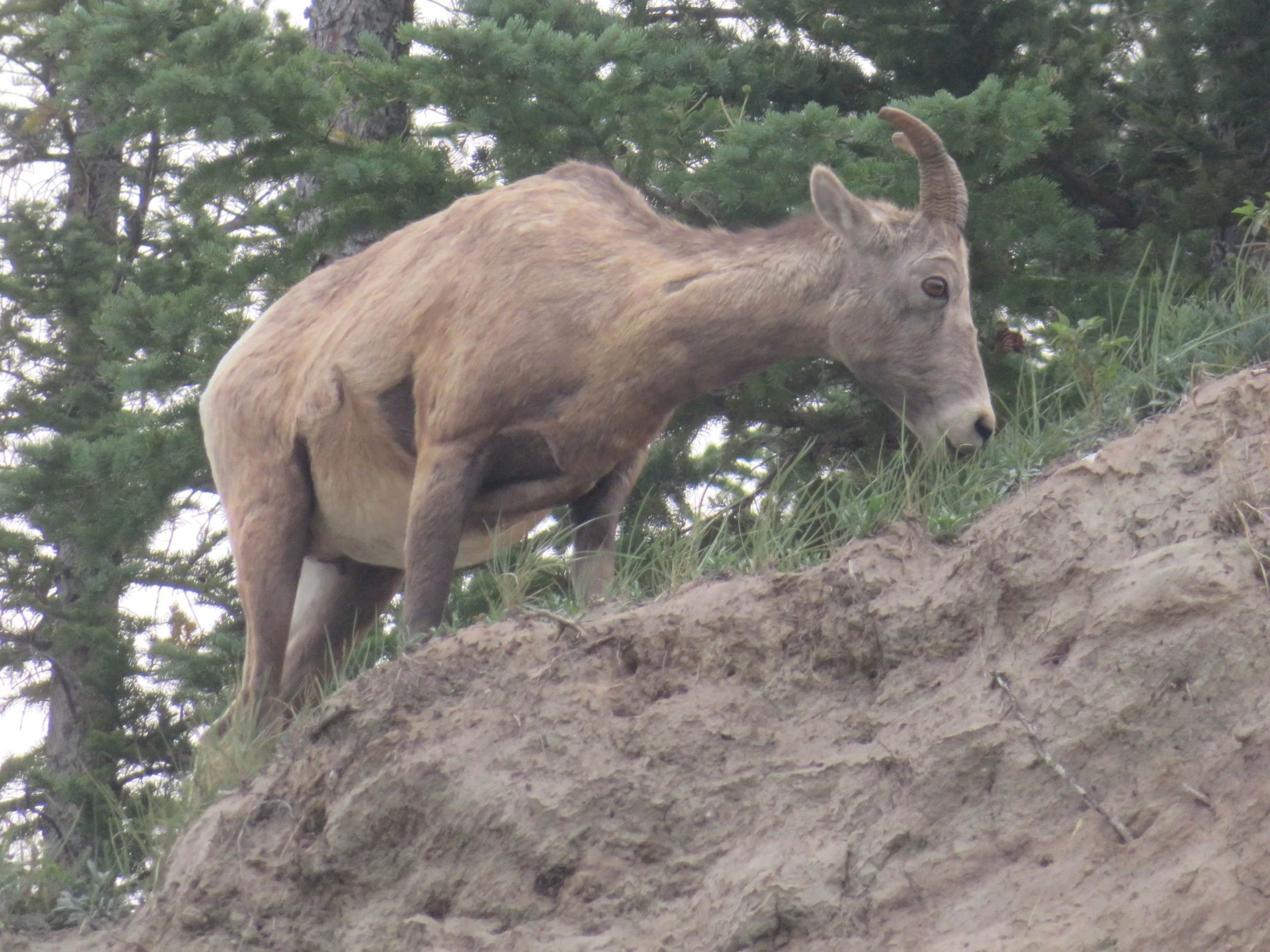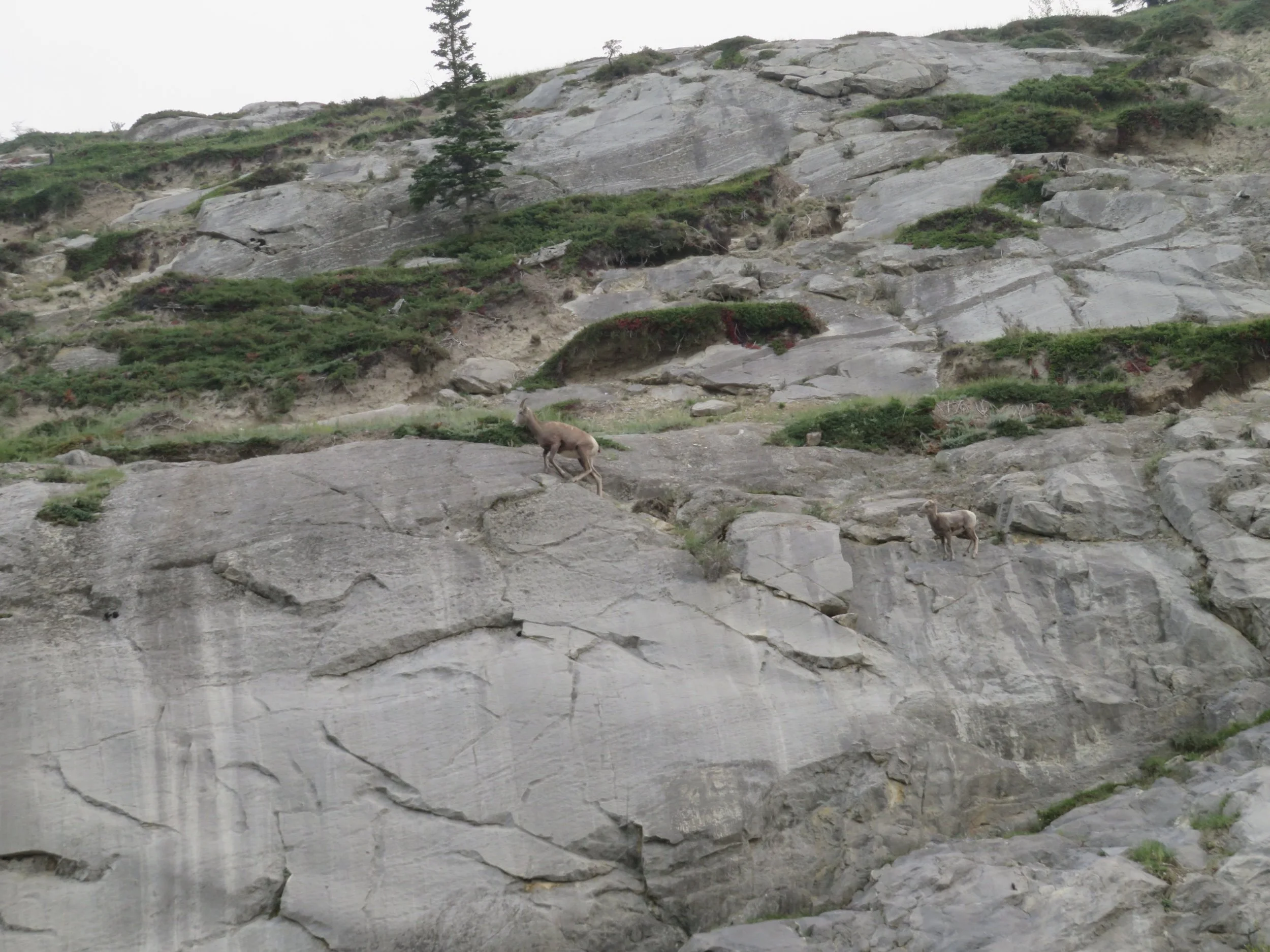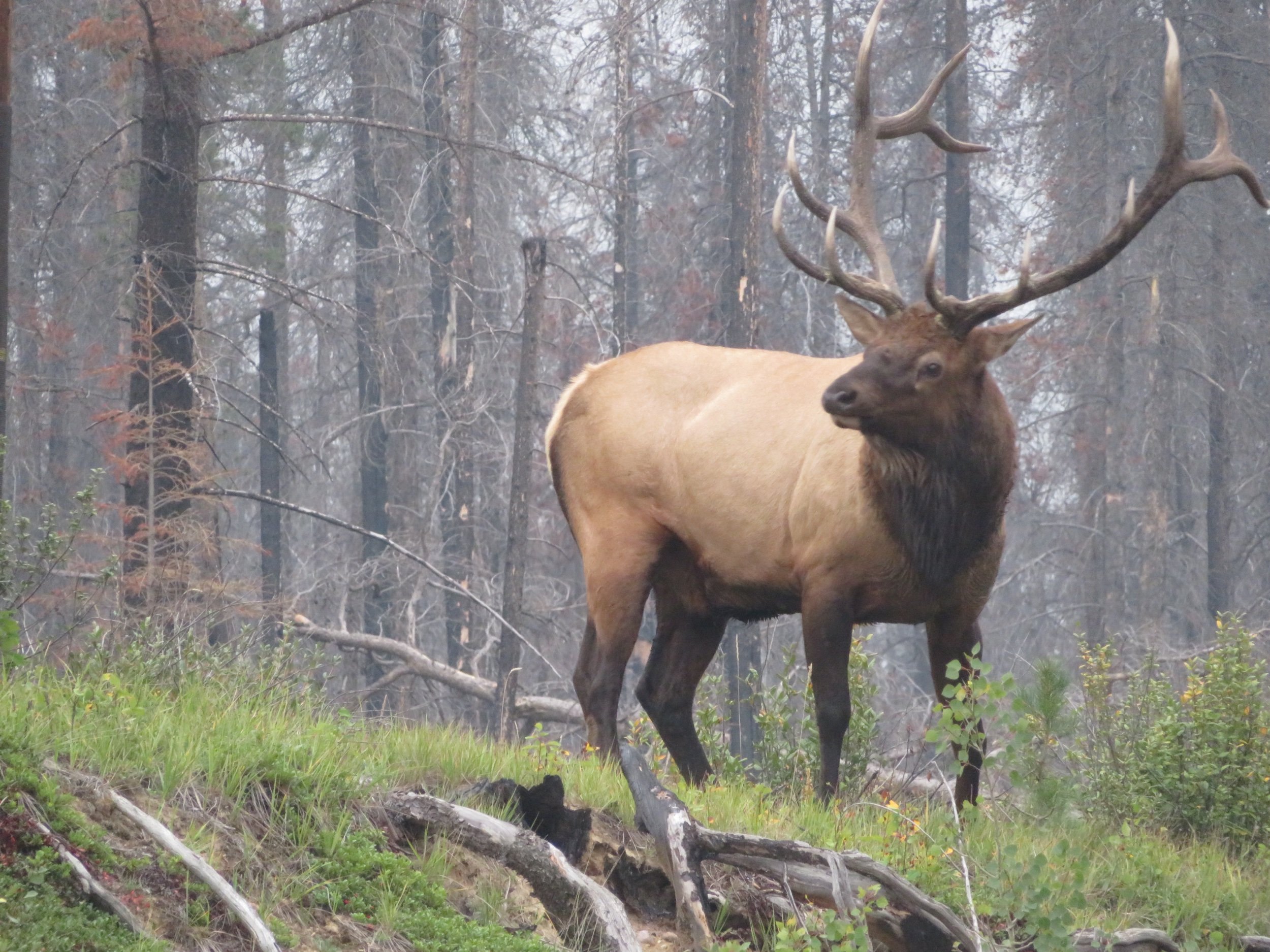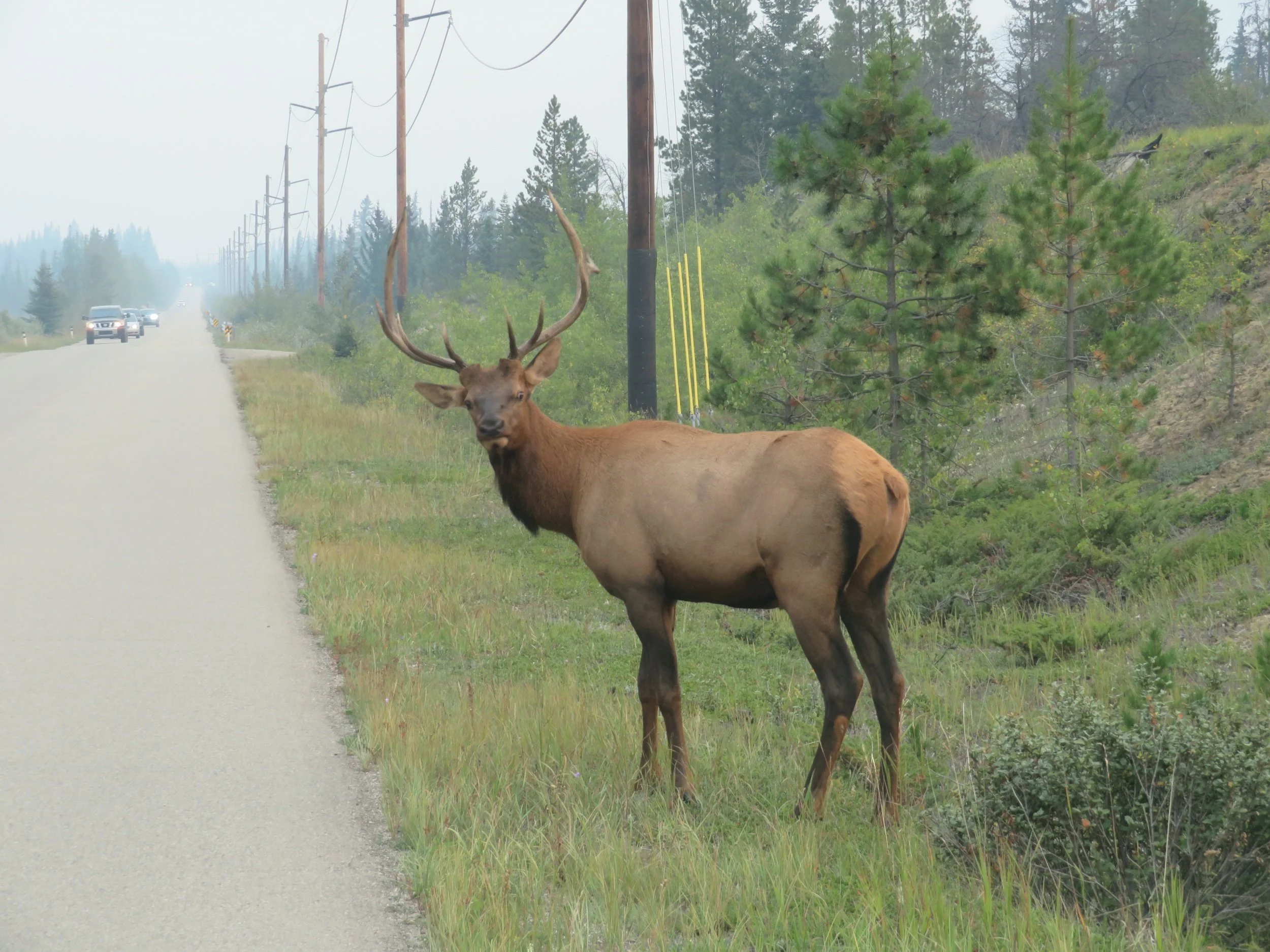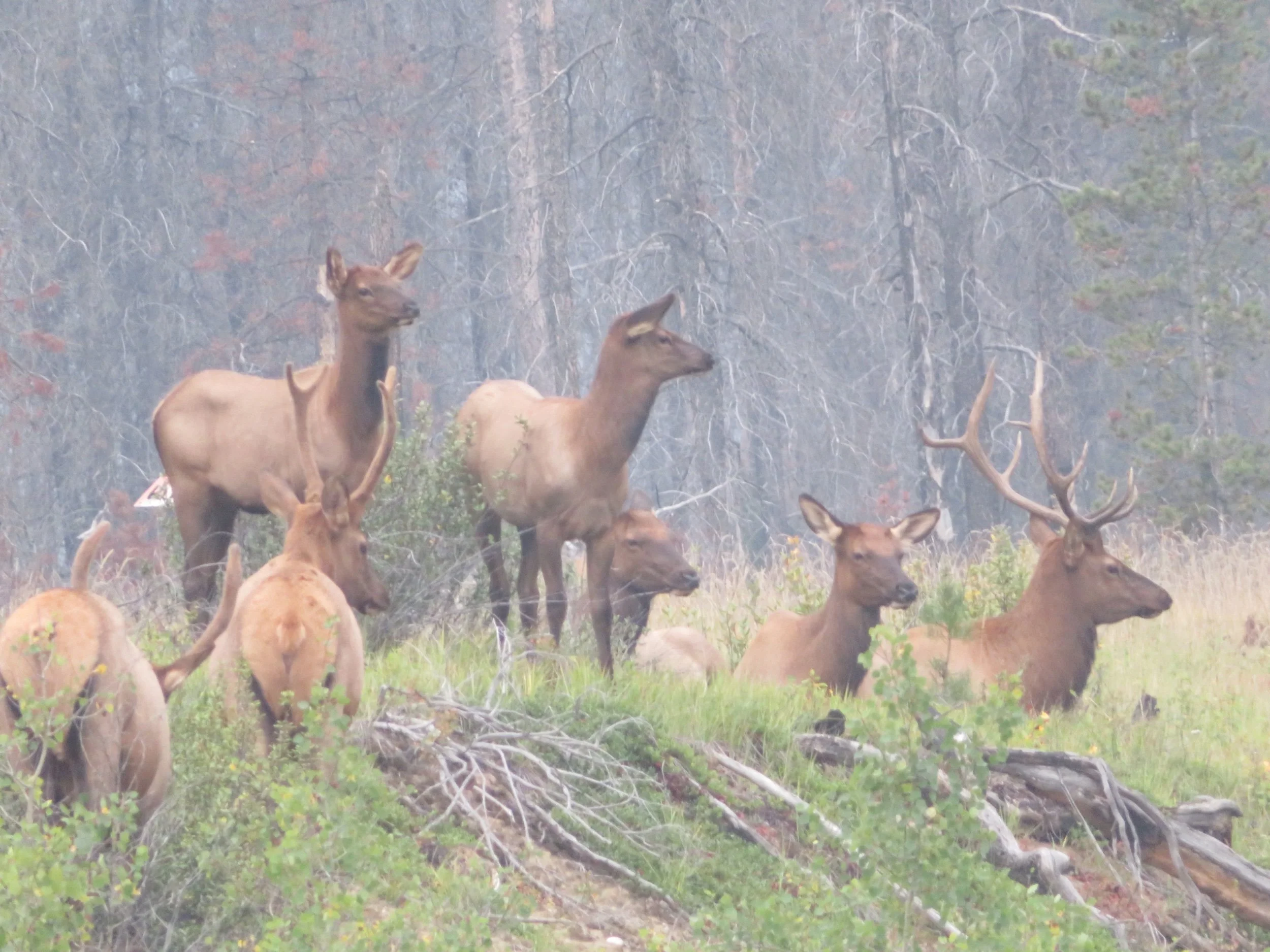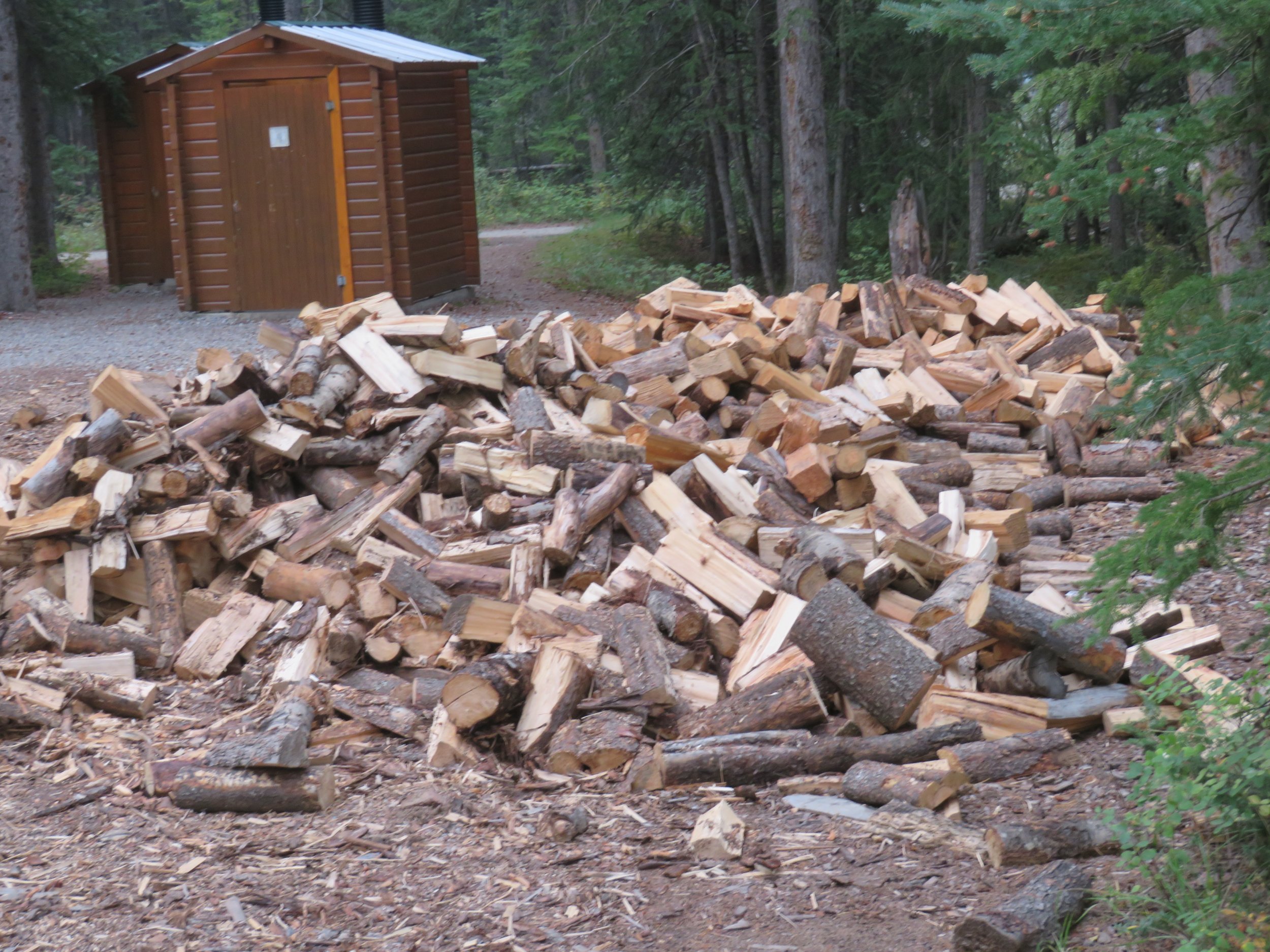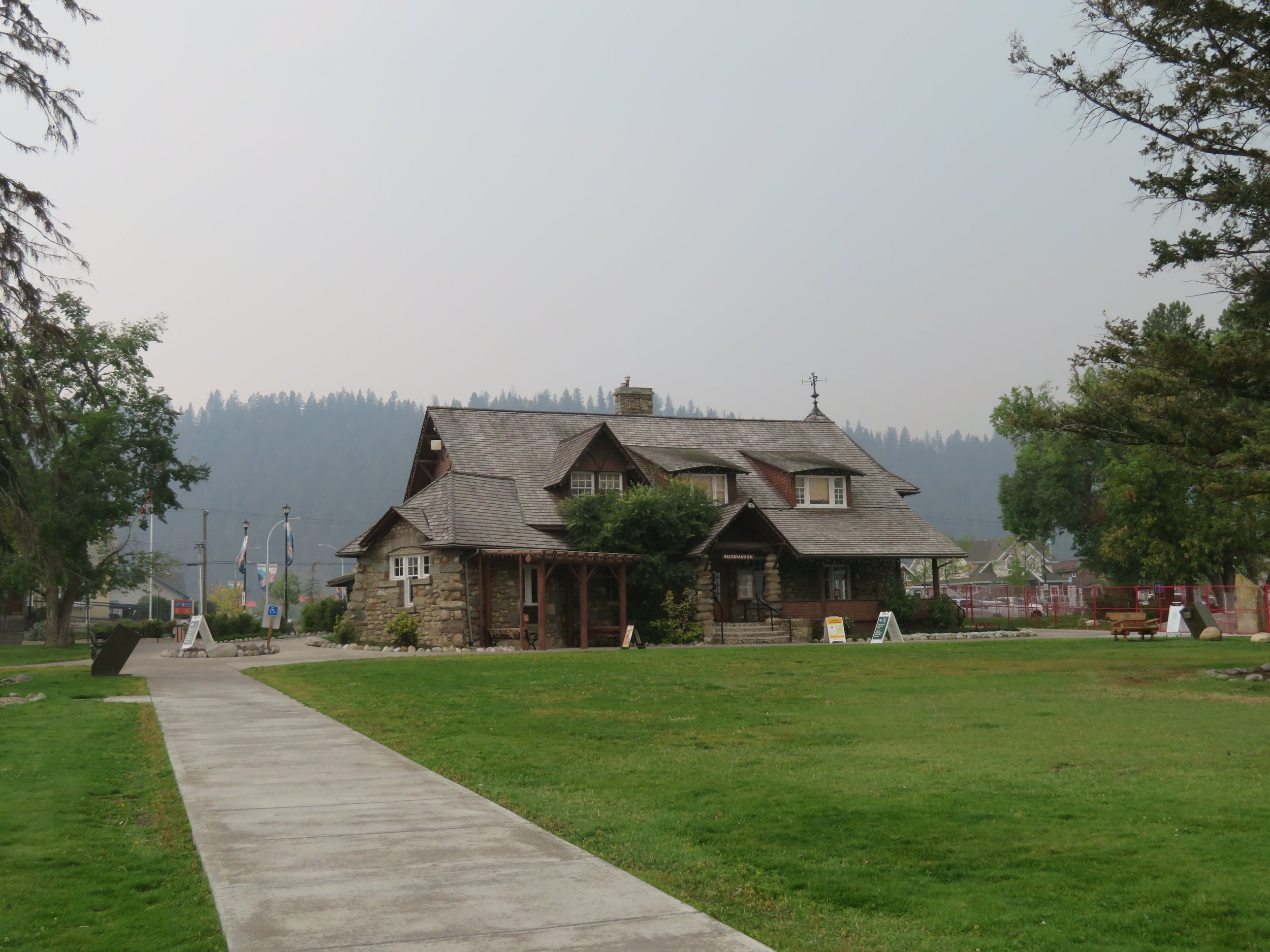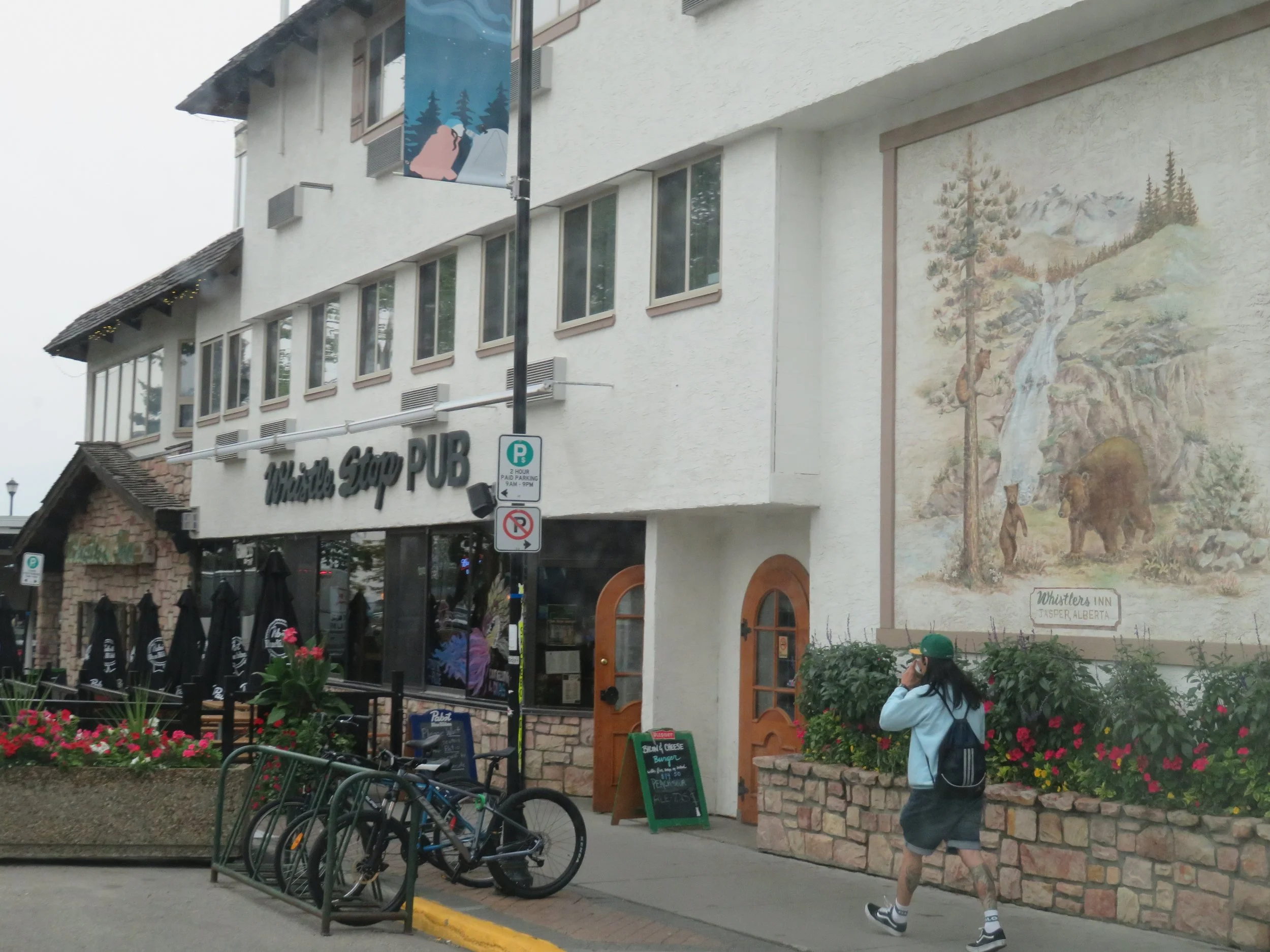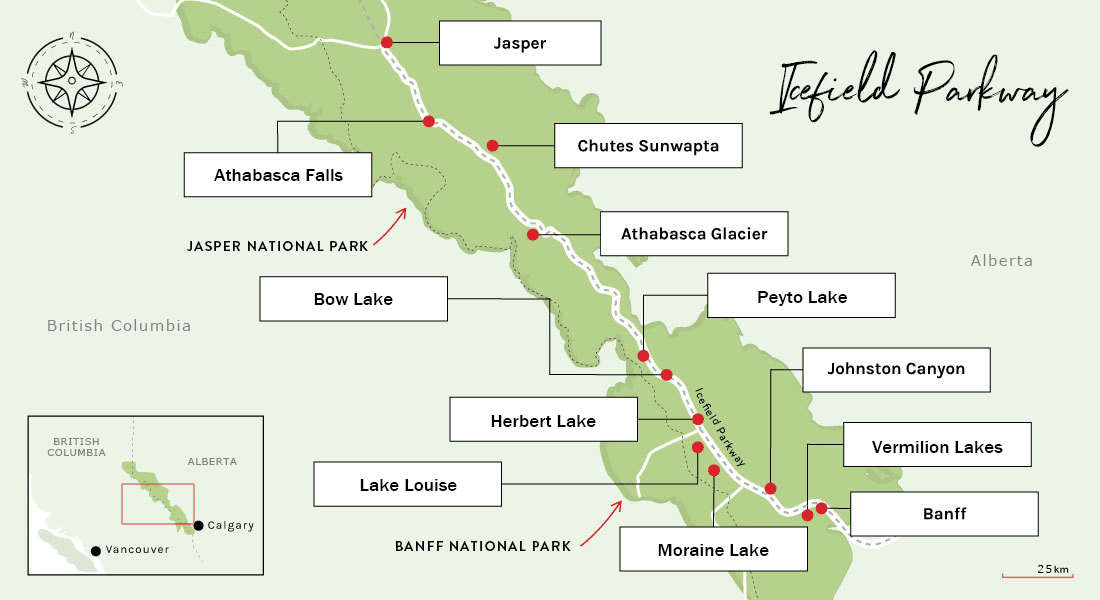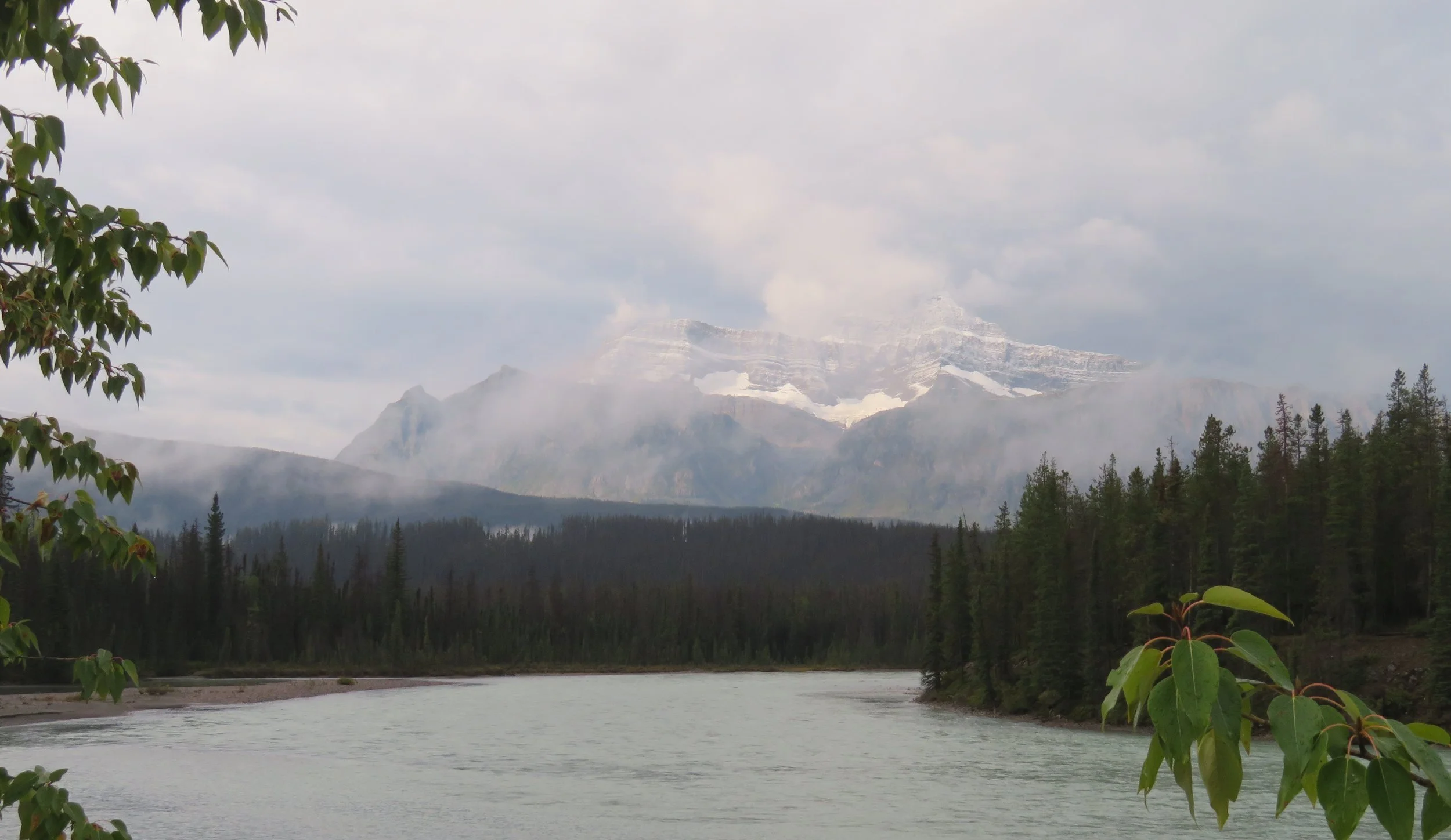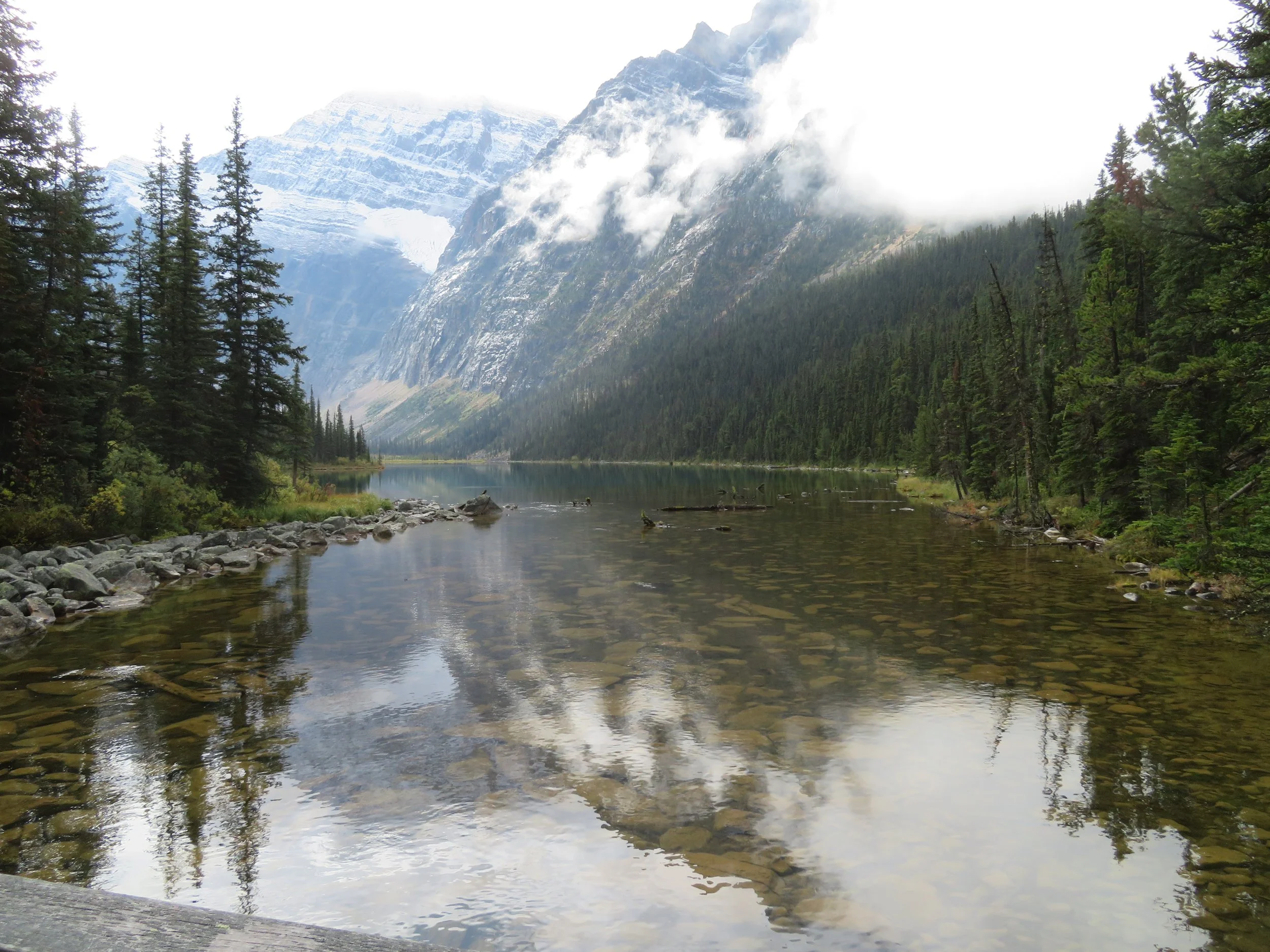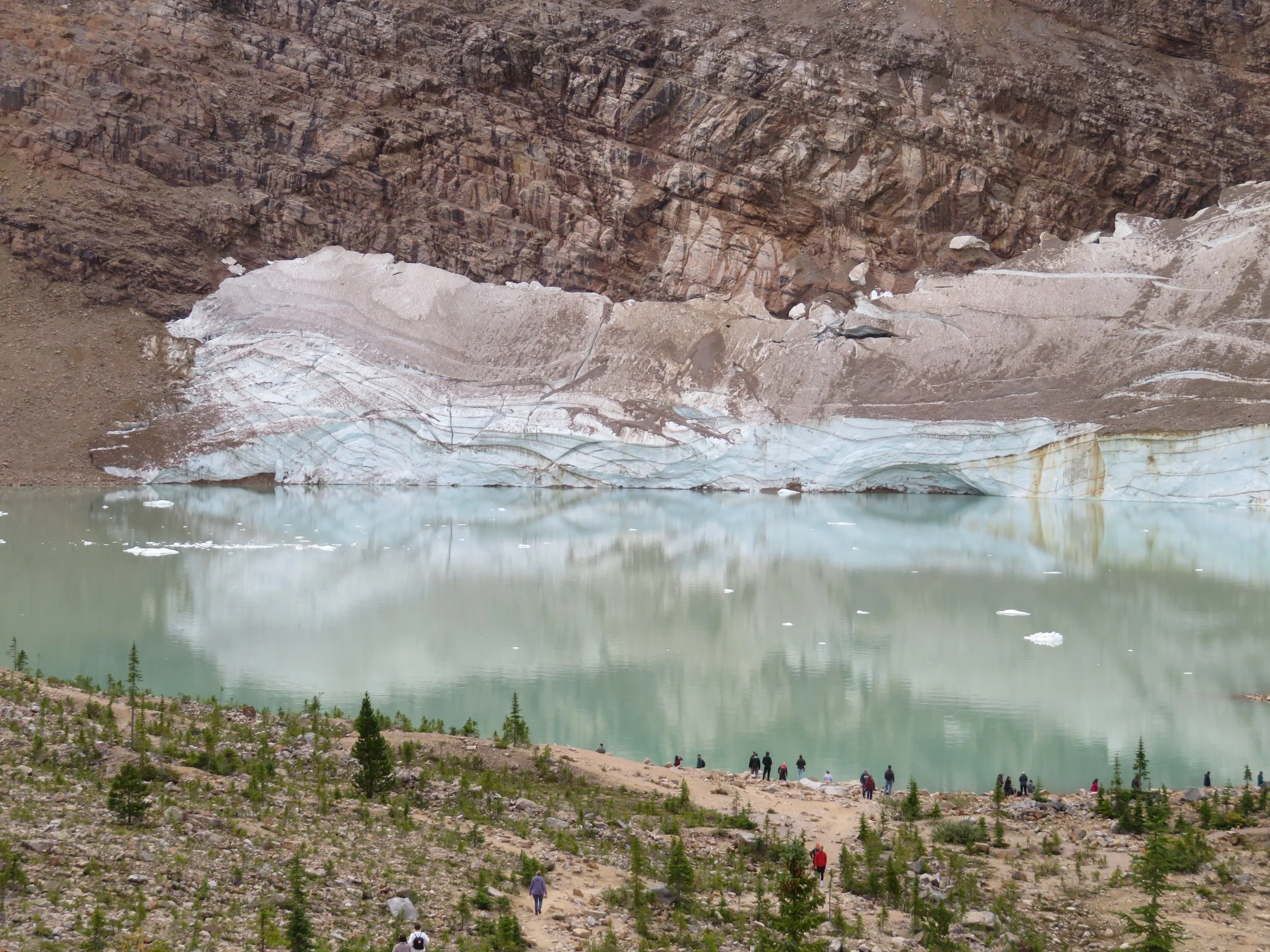Jasper National Park
/We headed south down the Bighorn Route (Alberta-40) from Grand Prairie. We were heading towards Hinton with the hopes of seeing the Northern Lights. David had checked and the aurora forecast was good. As long as the skies stayed clear, there was a good chance of seeing the lights. The weather forecast showed clear skies. Fingers crossed!
It was slow going heading south through lots of road construction. This is a heavy equipment route evidently… we saw gasoline worker camps, logging trucks, heavy wide loads and lots of semis. The wildlife was obviously flummoxed. A red fox darted out and then dove back into the bush. A doe was trying to cross with her two fawns and further along two more deer were trying to cross the highway.
We stopped for a leg stretch in Grande Cache. The town’s name derives from the fur trading years when caches were used by the fur traders to store supplies and furs. The Visitor Center fellow, Matt, was particularly knowledgable and helpful. We took a quick walk along the Bird’s Eye View Interpretative Park path which displayed old cabins and buildings as well as a native wickiup (a type of teepee shelter), a spirit house and, of course, a ‘grande’ cache.
We continued on to Hinton, ‘Gateway to the Rockies’, and stopped at the Visitor Center once again. When we walked in, we weren’t hopeful of getting much information. A young fellow was behind the desk and we made an instant faulty assumption that he’d be minimally helpful. Au contraire… bad on us, making such hasty assumptions! Joehn was friendly, very knowledgeable and went out of his way to answer our questions and give good advice including a campground at the McLeod River Recreation Area away from town that might have a better chance of clear skies.
We were able to purchase our Canada National Parks passes in advance here to avoid waiting in line at the park entry gate. Good for a year, each pass allows a vehicle and one person free entry to any of Canada’s National Parks. It was a bit cheaper for us to buy two senior passes ($123.50), than one family pass. Day passes cost $10.50/day/person. It doesn’t take long to make the annual pass an excellent value.
A long gravel road led us to the first-come/first-serve campground along the McLeod River. We were lucky to find the last available site. We had dinner and the sky was still clear, so we waited. David took a quick walk at 10pm. It was a little cloudy, but he could see the stars. By 11pm, it had clouded over completely. Bah! No aurora tonight.
It rained during the night and continued till mid-morning. It was gloomy, gray and raw. We stopped at Safeway and Freson Brothers (like a Whole Foods) groceries to stock up for the week’s groceries. It was a Canadian long holiday weekend and heading to the national park didn’t seem like a great idea. A brief respite had us walking the world’s longest freshwater boardwalk at Hinton’s Beaver Boardwalk. Beavers tend to be nocturnal critters, so they were in their lodge when we walked by.
Walmart allowed overnight parking as an option, but instead we found the Mary Reim Regional Park on the northeast side of town. With its large gravel parking lot, clean vault toilets and lots of trails, it looked as if it was probably the venue for local rodeos and county fairs. We checked for no overnight parking signs and found none. It seemed much more inviting than a Walmart parking lot, so we stayed.
Our goal for the day was Jasper National Park. We left Hinton early. We were really looking forward to Jasper and happily hung our park passes in the front windshield. We were a bit disappointed when heavy smoke and haze prevented us from seeing the beautiful scenery. We were sure there were mountains out there, but we weren’t quite sure where they were.
Named after Jasper Hawes, a North West Company trading post manager, and declared a Canadian National Park in 1930, Jasper National Park is the largest national park in the Canadian Rockies. Comprising ~4,200 sq mi (11,000 sq km), the park encompasses the glaciers of the Columbia Icefield, hot springs, turquoise lakes, lofty waterfalls and majestic mountains. Jasper was declared part of a UNESCO World Heritage Site in 1984 due to its geologic significance and wildlife diversity.
Just inside the park boundary, we spotted some mountain goats.
A bit further down the road, bighorn sheep appeared. Swans, probably trumpeters, were paddling around on a lake.
We saw the sign for Snaring Campground, our campground of choice, with a bold “Full/Complet” marked on it. Darn! Experience has taught us, however, that the campgrounds aren’t always full and we might, just maybe, get a site. We were especially hopeful when we saw a steady line of campers and vans leaving. As we traveled down the road to the campground, a herd of wapiti (elk) suddenly appeared on the roadside. A huge bull was bugling and fending off younger bucks, protecting his harem… it’s rutting season. The harem and a few younger males grazed, somewhat concerned, but not involved in the theatrics.
The campground was wonderful and there were actually several sites to choose from. We found a primo riverside site (B5) for $26.25/night ($25+5% GST). The vault toilets were clean and well-equipped, a mountain of free split firewood was available as was fresh water. We took a quick walk down to the river. The water was numbingly cold. No swimming today (as if!). Trains rumbled across the nearby tracks throughout the night.
Drizzle, sprinkles and intermittent rain showers kept it cold and damp all day. The sun appeared briefly, but it was only a tease. We headed into Jasper Townsite mid-morning. We were dressed in layers including our winter jackets and still the cold wind penetrated. Jasper is a cool little tourist town… very commercial, but pleasant.
We stopped at the Visitor Center first and picked up a park map which included hiking trails and sights to see. The handsome cobblestone and timber building, by the way, is considered a prime example of Canadian rustic architecture.
The Whistle Stop Pub was our choice for lunch. We wandered from shop to shop to check out their offerings. We ended up with a couple postcards, a t-shirt for David and a new coffee mug for Marcie.
We set off down the Icefields Parkway (aka Alberta-93), a 144-mile (231 km) mountain road that parallels the Continental Divide. Wending its way through the Columbia Icefields, the highway begins (or ends) just south of Jasper at the intersection of Alberta routes 16 and 93 and ends in Banff National Park near Lake Louise. (Map credit: authentikcanada.com)
Many of the campgrounds are beginning to close now. Early September, after Canadian Labor Day, seems to be the start of the closures. Some are open till mid-September and other than a few year-round campgrounds, most close by early-mid October. We found an available campsite ~30 miles south of Jasper at Honeymoon Lake for the night. Still bundled up in our winter jackets, we grilled chicken for dinner over a campfire. It was still cold and damp, but warm next to the campfire. The sky was pitch black with nary a star once the sun went down.
It rained again during the night and we woke to yet another raw, gloomy day and a cold 37F temperature. It was difficult to be too upset as the area desperately needed rain. On the more selfish side, we were also hoping the rain would cleanse the air and the smoky haze would dissipate.
We had to backtrack on the Icefields Parkway to see what we’d missed. Yes, there are mountains and they were all around us. After several days of gray gloom and smoky haze, our wish was granted and the air began to clear.
We followed a secondary road (93A) off the Parkway through the Tonquin Valley to Mount Edith Cavell, named after a WWI British nurse executed by the Germans for aiding in the escape of British soldiers from German prison camps. We were alone as we walked down to the picturesque Edith Cavell Pond. Dabbling ducks alternately swam and dove for breakfast. Clark’s nutcrackers flitted about, always too quick for the camera. Squirrels chattered and hustled in their collection of winter stores. It was quiet and serene. The intense smell of fresh pine was heavenly.
By the time we reached the Mount Edith Cavell viewpoint and Trail of the Glacier path further up the road, we were midst a crowd. We walked the short, scenic path for stunning views of the mountain and the Angel Glacier.
Ice floe in the the turquoise glacial lake reminded us how cold it was.
With luck, we found a campsite in the ‘reservations only’ Wabasso Campground ($32.50) for the night. Hot showers, flush toilets, free firewood, cell coverage, dinner on the campfire grill… life is good!
Next time, we continue along the Icefields Parkway with oh so many stops along the way… Sunwapta Falls, the Icefield Centre and Athabasca Glacier. It’s cold, but the sun’s out. C’mon along, but dress warmly!


